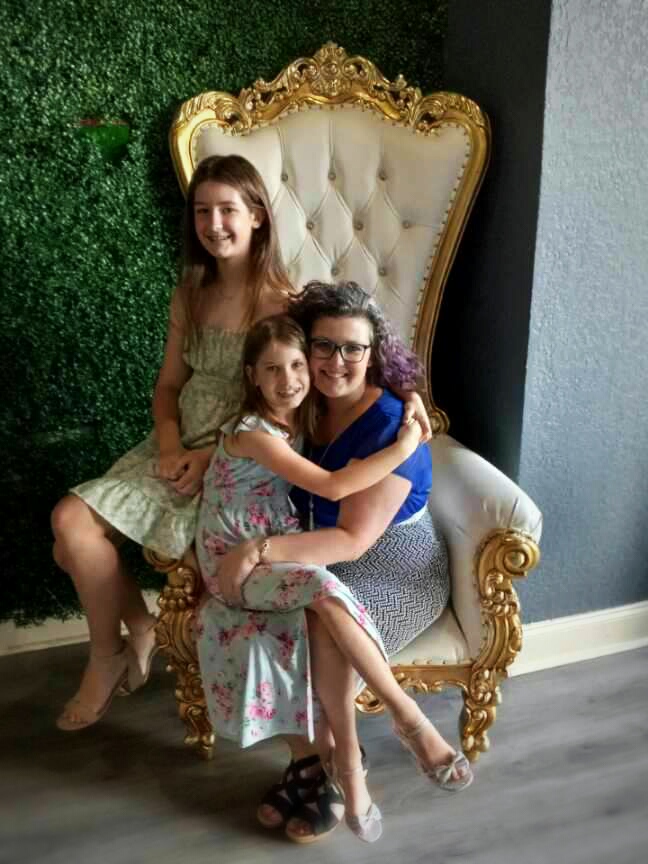Any moms out there potty training? We started this weekend (with our 16 month old daughter) and so far no wet pants. Wow, right? Well, I didn't mention the pee pee in the freshly drawn bath water (just 3 minutes after sitting on the potty) or the little puddle in the middle of my bathroom floor (just 5 SECONDS after sitting on the potty). Oops! Still, it has been a good first day. Our timing is just a tiny bit off but I'm confident we'll get the hang of it and finally get the pee pee inside the potty.
For anyone interested, we're using a modified
Positive Practice technique.
1. Don't make any plans. Stay at home and keep your full attention on potty training.
2. Wear regular underwear - with Pull-ups and diapers for naps/bedtime.
3. Give lots of liquids but don't give them foods to make them thirsty. The idea is to be well hydrated, not overhydrated.
4. Tell your child "let's go potty" (you can also simultaneously use sign language if you anticipate teaching your child the sign for potty). Sit on the potty once every hour. If the child voids on the potty, reset your timer for 1 hour. If the child does not void, reset the timer for 15 minutes. (We are only sitting from 1-5 minutes so as to not make this process aversive). FYI: the sign for "toilet" is fairly simple - make a fist, place thumb between your index and middle fingers (ASL for the letter T), and twist your wrist back and forth so that you are kind of shaking your fist. You do not need to require your child to use the sign or say "potty" at this time. This will come when they begin to self-initiate.
5. If the child voids on the toilet, reinforce with a tangible item (miniature M&Ms work well) as well as verbal praise (you could even do the "potty dance" and sing "pee pee in the po-tty"). Help the child to pull up their pants.
6. When your timer rings, do a dry check. Guide the child's hand on their pants to feel if they are dry or wet. If dry, provide reinforcement and verbal praise. (We've been skipping this step for now as I don't think a 16 month old would truly understand this part.)
7. If during a "dry check" the child is wet, have them touch the wet pants and tell them where they should void ("Pee pee in the potty. No pee pee on the floor".) Bring child to the bathroom right away, help them pull down their wet pants, sit on the potty, and then pull up their wet pants and bring them back to where they urinated. Follow this routine of positive practice 5 times. After the fifth time, change the child and have child help clean up the wet spot. Do not provide a lot of attention at this time. While this practice is not suppose to be fun for the child, you should not use punishment but also do not reinforce any problem behaviors.
8. When your child begins to "self-initiate" or independently tell you they need to potty, stop scheduling the child for potty time. If you continue to run this schedule the child is likely to become dependent on a schedule rather than initiate on their own.
9. Continue to keep child's bladder filled with fluids. At this time more accidents are likely to occur, but continue to use the positive practice procedure when this happens.
10. If the child stops self-initiating and continues to have accidents, start scheduling again.
11. Once the child has several consecutive initiations (over multiple days) without accidents, stop forcing fluids.
12. When you are ready to go to public places, make sure you fill your child's bladder before you go. When you reach your destination, show your child the bathroom (not just where it is but go in and see the potty) and see if your child will self-initiate. Use some prompting if necessary.
13. The child will likely not master bowel training just because they have mastered bladder training. It's important to NOT go back to using diapers. There is no need to use positive practice but you should have the child help you clean up. Always reinforce for going on the potty! Many children have a pretty regular schedule for bowel movements so it's a good idea to have them sit on the potty at that time.
14. If you have a boy, wait until he is both bladder (sitting down) and bowel trained to begin teaching them to stand while urinating. And just a heads up, get a shield for your child's potty and teach them to "tuck" or you're going to get wet!
15. Once the child has mastered self-initiation, it's a good idea to start teaching them to request for the potty. You can use simple words - pee pee, potty - or even sign language. When the child self-initiates and begins heading for the bathroom, stop them and prompt them to use their new word or sign.
And there you have it. Happy training!


